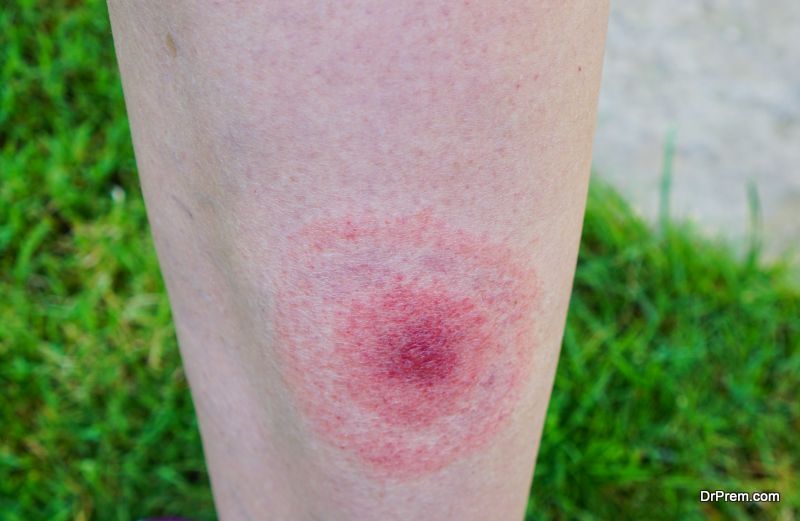According to a research, climate change could be one of the reasons for the spread of infectious diseases. A new study conducted by the Liverpool University is perhaps the first assessment on a large scale about the effect of climate on bacteria, microorganisms, viruses and parasites, which cause diseases in humans. The results of the study might help policy makers place a priority to put under surveillance the pathogens that respond to changing climate, and thus strengthening our resilience against infectious diseases.
Growing evidence of climate change altering disease distribution

There is a growing body of evidence that climate change has changed the distribution of certain diseases, such as Zika in South America, Schmallerberg disease spreading in Europe’s livestock, and the bluetongue disease.
The lead researcher of the Liverpool University, Dr Marie McIntyre says that, previously, the link between contagious disease and climate change was established, but the extreme impact of climate change was not understood, nor was it clear which diseases would have most effect.
Kinds of diseases which are affected by climate change
With the increase of global warming, the climate worldwide has become increasingly unstable and has driven the resurgence, redistribution and emergence of contagious diseases.
Diseases which are caused by ticks and insects, (vector borne) have been seen to be highly affected by the phenomenon of climate change. Old (resurgent) and new (emerging) diseases such as malaria, dengue, hantavirus, cholera etc are again resurfacing. Due to the high temperatures and flooding caused by climate change, there have been increasing outbreaks of salmonella, giardiasis and cholera, which had otherwise been under control for many years.
Diseases which were transmitted through food, water and soil were the next to be affected by climate change.
 The study reviewed 100 human pathogens and 100 domestic animal pathogens in Europe, which have biggest impact on health. Almost 2/3rd so of the pathogens responded to changes in climate and 2/3rds of the pathogens have climate drivers, which means that climate change can have a very severe impact on them, and may cause multi-faceted changes in them.
The study reviewed 100 human pathogens and 100 domestic animal pathogens in Europe, which have biggest impact on health. Almost 2/3rd so of the pathogens responded to changes in climate and 2/3rds of the pathogens have climate drivers, which means that climate change can have a very severe impact on them, and may cause multi-faceted changes in them.
Some of the diseases which had the largest climate change drivers were cholera, anthrax, liver fluke and Lyme disease.
Zoonotic pathogens i.e. those pathogens which spread from animals were found to be much more sensitive to climate than those which affect only animals or only humans. As emerging diseases are zoonotic in nature, these diseases too would be influenced by changing climate.
To what extent will climate change cause change in disease patterns
Though diseases’ sensitivity to climate change is well-known, the extent to which diseases will be affected by fluctuating and unstable climate is what is causing concern in the scientific community. This has led to scientists focusing on three important aspects –
Firstly – can the answers be found in the recent past by studying the effect of climatic trends and disease occurrence?
Secondly – What is the evidence that can prove that diseases have indeed changed prevailing trends into variations, which can be attributed to global warming/climate change?
Thirdly – How can the existing knowledge be used to create predictive models which can estimate the future scenario of climate change and transmissibility of infectious diseases.
Since it has been found that there is more than one single climate driver, present research, which considers only one or two drivers, is not enough to predict the response of diseases to climate change, and subsequently, the affect it will have on the health of people worldwide.
According to scientists, though climate change is one of the reasons, there are other factors which influence the spread of disease, such as land use, transport, migration etc.
How does high temperature affect pathogens/vectors
 Temperature might modify the biting rates, as well as alter the transmission length season. This might happen on land and in the ocean, leading to longer periods of particular diseases. Phytoplankton populations bloom when the ocean is warmer, which in turn leads to greater zooplankton, which is connected to the cholera causing vibrio cholera.
Temperature might modify the biting rates, as well as alter the transmission length season. This might happen on land and in the ocean, leading to longer periods of particular diseases. Phytoplankton populations bloom when the ocean is warmer, which in turn leads to greater zooplankton, which is connected to the cholera causing vibrio cholera.
Thus, global warming is leading to many diseases which are connected in many ways to climate change. There is a possibility of ecosystems changing in response to climate change and altering the conditions which lead to infectious diseases.




